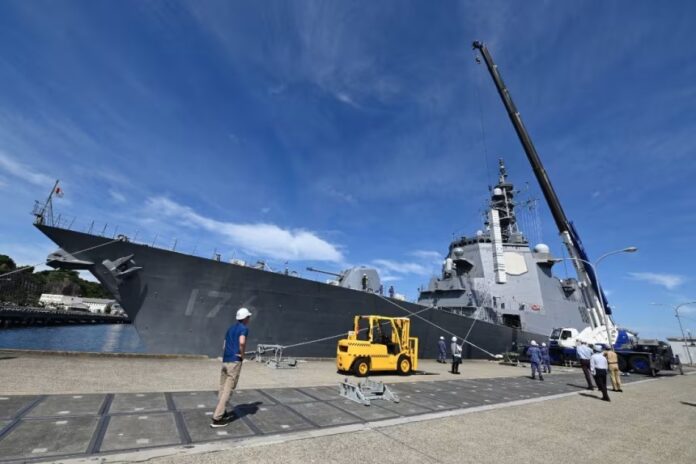By Michelle Ndaga
Japan is set to significantly expand its naval strike capabilities by modifying one of its Aegis destroyers to launch U.S.-made Tomahawk cruise missiles with a range of up to 1,000 miles, a move that underscores rising security tensions in the Indo-Pacific.
Defense Minister Minoru Kihara confirmed that the JS Chōkai (DDG-176), an Aegis-equipped destroyer, will be upgraded to carry Tomahawks by March 2026.
The modification is part of a broader deal with Washington to supply Japan with 400 Tomahawk Block IV and Block V missiles, which can hit land-based targets deep inside adversary territory. By 2027, Tokyo plans to have all eight Aegis destroyers in its fleet fitted with the new long-range strike capability.
The deployment marks a historic shift in Japan’s postwar defense posture. For decades, Japan maintained strictly defensive capabilities under its pacifist constitution, but growing threats from China’s expanding naval power and North Korea’s accelerating missile program have prompted Tokyo to pursue what it calls “counterstrike capabilities.” Officials argue that the missiles are vital for deterrence, enabling Japan to neutralize enemy launch sites if attacked.
Analysts say the integration of Tomahawks could reshape the regional balance of power, allowing Japan to project force across much of East Asia and enhancing interoperability with U.S. naval forces.
However, critics warn the move risks fueling an arms race in the Pacific and could draw Japan deeper into potential conflicts.
The upgrades require significant technical adjustments, including new fire-control systems, crew training, and joint testing with the U.S. Navy.
Despite the challenges, officials insist the timeline remains on track, reflecting Tokyo’s urgency amid an increasingly unstable security environment.
The development is being closely watched in Beijing and Pyongyang, where both governments have previously condemned Japan’s expanding military reach. Still, Tokyo insists its new capabilities remain defensive in nature and are aligned with its constitutional mandate to safeguard national security.



















